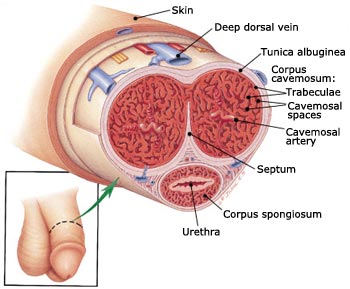Introduction
Unlike taking Viagra before a prostatectomy (where there is little proof of a benefit to erections after a prostatectomy), taking Viagra after a prostatectomy (or other tablets from the same Viagra family) is a key part of the recovery process for men to re-attain their erections.
In short, the increased blood flow to the penis helps the recovery to be faster. This recovery process is known as ‘penile rehabilitation’, and it has been conclusively shown through medical research that this greatly increases the rate of potency (the percentage of those able to get an erection) in patients.
Background
The drug company Pfizer first investigated Viagra over 30 years ago in patients with lung disorder pulmonary hypertension, but soon discovered that many of the patients taking the trial drug developed an interesting side-effect. The rest, as they say, is history and Viagra is now one of the most well-known drugs ever manufactured.
Tablets from the Viagra family (phosphodiesterase type 5 inhibitors, or PDE5i) work by blocking the enzyme that causes penile detumesence (reversal of an erection), resulting in increased penile blood flow. There are 3 drugs in this family and each has a trade name (given to it by the company that makes it, which you will likely recognise), and a generic or scientific name as well.
- Viagra or sildenafil
- Cialis or tadalafil
- Levitra or vardenafil
Penile rehabilitation – how it works
Prostate removal can interfere with the function of the cavernosal (erectile) nerves due to their very close proximity to the prostate, as well as the arterial blood supply into the penis as some of it travels through the penis. This effect is less in younger, fitter men with robust erections who have had nerve-preserving surgery and maximal when the nerves cannot be preserved because of the proximity of prostate cancer and in older patients.

The concept of penile rehabilitation stems from the theory that if penile blood flow and erections can be encouraged soon after surgery, the recovery of erections will be faster and more complete. Even so, it can take up to 3 years for recovery to be complete. The initial research into penile rehabilitation was with injection therapy and found that men who regularly used it had a much higher rate of potency 6 months after surgery than those that did not: 67% versus 20%.
In the modern era, penile rehabilitation is done with PDE5is (i.e. tablets from the Viagra family). It typically starts 4 weeks after surgery, and appears to be as effective as injection therapy – 64% of patients who took Viagra being potent at 18 months after surgery (study published by Mulhall and colleagues in 2005 in the Journal of Sexual Medicine) compared to 24% of men who did not.
My recommendation
Ideally, patients should take a PDE5i 1-3 times a week (tadalafil comes as a 5 mg tablet for daily use) until their erections are strong enough to no longer need any drug assistance at all. However, because many men undergoing a prostatectomy already have erectile dysfunction before the operation, many men continue to use PDE5is years after their surgery to give them a better quality and duration of erection.